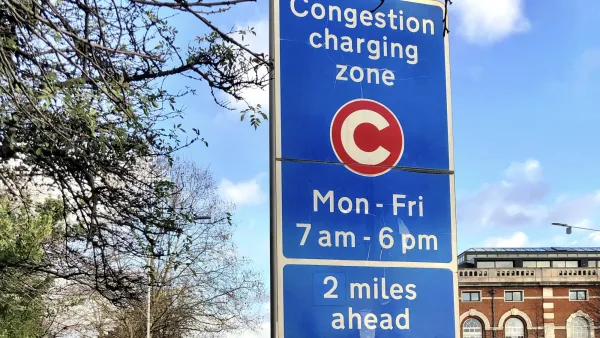According to a new EIA report, the cost advantages of liquefied natural gas make it an attractive alternative to diesel fuel for major U.S. freight railroad companies. Hybrid diesel-electric locomotives on order for 5 states will power HSR routes.
"Liquefied natural gas (LNG) likely will play an increasing role in powering locomotives in the coming years, according to a recent U.S. Energy Information Administration (EIA) report ," writes the staff of Progressive Railroading. EIA is located within the Department of Energy.
The reduction in diesel fuel consumed in the U.S. could be substantial, as well as the cost savings to the Class 1 railroads that are considering employing the LNG locomotives and tenders.
The seven Class Is consumed more than 3.6 billion gallons of diesel in 2012, or 7 percent of all diesel consumed in the United States. The fuel cost more than $11 billion to purchase and accounted for 23 percent of the railroads' total operating expenses, according to the report.
EIA states that the price difference between diesel and LNG fuel is driving the rail companies to consider natural gas, although "in addition to the risk surrounding future fuel prices, other factors including operational, financial, regulatory, and mechanical challenges also affect fuel choices by railroads."
These railroads are considering the use of LNG in locomotives because of the potential for significant fuel cost savings and the resulting reductions in fuel operating costs. Given the expected price difference between LNG and diesel fuel, future fuel savings are expected to more than offset the approximately $1 million incremental cost associated with an LNG locomotive and its tender.
Rather than market forces, it is the Passenger Rail Investment and Improvement Act of 2008 (PRIIA) and EPA Tier IV diesel emission standards that drove Siemens to select hybrid diesel-electric locomotives to achieve "90 percent reduction in nitrogen oxide, a greenhouse gas, and in particulate matter (aka soot), which contributes to pollution and health problems," writes the senior editor of ThinkProgress, Annie-Rose Strasser, about the "higher" speed locomotives being built for Amtrak routes in California, Washington, Michigan, Missouri, and Illinois.
For an example of hybrid diesel-electrics, Strasser cites a European "hybrid locomotive that cuts energy use and carbon emissions by 25%. The system claws back kinetic energy that’s normally lost during braking, converting it to electricity that’s stored in a battery," wrote Co.Exist staff writer, Ben Shiller, last year about the conversion of a diesel locomotive to "a parallel hybrid, which means you can use either the diesel engine, a combination of the diesel and the batteries, or just the batteries."
According to UPI, Siemens will manufacture the trains at its "plant in Sacramento, California while the primary traction drive, a 4,400 hp-rated diesel engine with 16 cylinders and a cubic capacity of 95 liters, will be manufactured by Cummins Inc., in Columbus, Indiana."
FULL STORY: EIA report: Potential savings make LNG an attractive fuel option for railroads

National Parks Layoffs Will Cause Communities to Lose Billions
Thousands of essential park workers were laid off this week, just before the busy spring break season.

Retro-silient?: America’s First “Eco-burb,” The Woodlands Turns 50
A master-planned community north of Houston offers lessons on green infrastructure and resilient design, but falls short of its founder’s lofty affordability and walkability goals.

Delivering for America Plan Will Downgrade Mail Service in at Least 49.5 Percent of Zip Codes
Republican and Democrat lawmakers criticize the plan for its disproportionate negative impact on rural communities.

Test News Post 1
This is a summary

Test News Headline 46
Test for the image on the front page.

Balancing Bombs and Butterflies: How the National Guard Protects a Rare Species
The National Guard at Fort Indiantown Gap uses GIS technology and land management strategies to balance military training with conservation efforts, ensuring the survival of the rare eastern regal fritillary butterfly.
Urban Design for Planners 1: Software Tools
This six-course series explores essential urban design concepts using open source software and equips planners with the tools they need to participate fully in the urban design process.
Planning for Universal Design
Learn the tools for implementing Universal Design in planning regulations.
EMC Planning Group, Inc.
Planetizen
Planetizen
Mpact (formerly Rail~Volution)
Great Falls Development Authority, Inc.
HUDs Office of Policy Development and Research
NYU Wagner Graduate School of Public Service



























